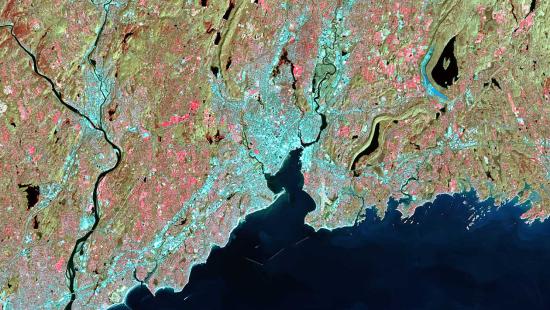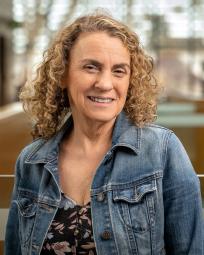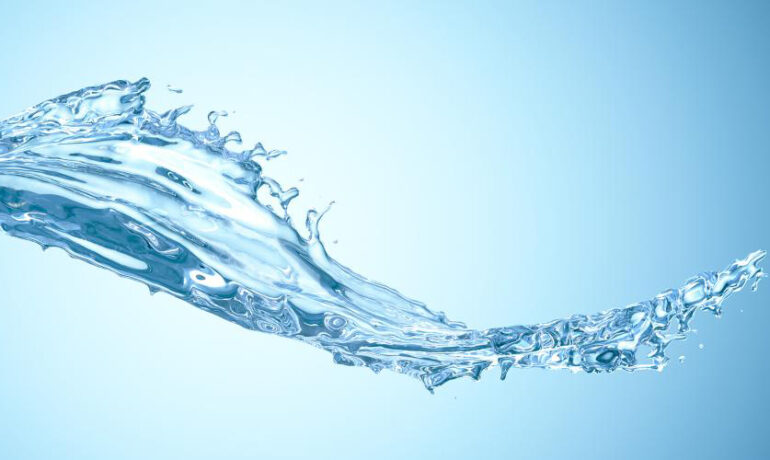In the face of increased drought, floods, and rapid population growth, combined with the burgeoning water demands from the agriculture, industry, and energy sectors, how can we ensure access to clean water and adequate supplies? Yale School of the Environment Professors Jim Saiers and Shimi Anisfeld offer some thoughts on potential short- and long-term solutions.
As we enter the midpoint of the U.N.’s International Decade for Action on Water for Sustainable Development, the world is facing a stark reality. The growing worldwide population, along with rapidly developing economies and the effects of climate change are exacerbating access to safely managed water. Almost half of humanity — 3.6 billion people — lives without safely managed sanitation; about 2.3 billion people lack basic handwashing facilities at home; and more than 80% of wastewater is released into the environment without being treated or reused, according to the U.N. 2023 Water Conference Vision Statement.FACULTY

James E. SaiersClifton R. Musser Professor of Hydrology
“We must work up to four times faster to get on track … to ensure availability and sustainable management of water and sanitation for all by 2030. Let us act now with the speed and priority commensurate with the urgency of this crisis,” the statement noted.
YSE News talked with James Saiers, Clifton R. Musser Professor of Hydrology and Shimi Anisfeld, senior lecturer and research scientist in water resources and environmental chemistry, about the challenges ahead. Both said that while the challenges are daunting, there are solutions.
Q. What steps can be taken to increase water supply around the globe?
Saiers: Some of the problems that we are having are related to how we use fresh water. We could be using water more efficiently. Across the globe, 70% of fresh water is used for agricultural purposes. We can take steps to conserve water, with more efficient irrigation methods and shifting to less water-intensive crops. We can limit the loss of water during its conveyance in fields. We have to think about better ways to store water during times that it is plentiful, such as through enhanced artificial recharge where you divert water from streams and rivers when they are flooding and distribute the water over catchment areas, letting the water seep through soil and back into aquifers.FACULTY

Shimon C. AnisfeldSenior Lecturer II and Research Scientist in Water Resources and Environmental Chemistry
Anisfeld: Water is really a local problem more than it is a global problem, so different places will need different solutions. Many areas will be able to alleviate scarcity by managing demand through efficient technologies and behavioral change. Some places will use desalination and wastewater recycling to increase supply, while others will use water harvesting and green infrastructure to capture stormwater runoff as part of a “One Water” approach. Maybe the trickiest issue is the reallocation of agricultural water to cities (and to environmental flows). The current level of water use in desert agriculture is unsustainable, and we need to figure out how to safely and fairly transition to a smaller agricultural footprint in water-scarce areas.
Q. Half of humanity lives without safely managed sanitation. What needs to be done to help remedy this?
Saiers: The first thing we have to do is stop polluting our water. That means controlling wastewater runoff into streams and rivers, controlling agricultural runoff into major river bodies, and developing sensible regulation for water resources protection and enforcing regulations globally. We need to provide infrastructure such as toilets and septic systems. This requires investment, development support, education, and community engagement.
Anisfeld: This is one of the most urgent problems facing humanity. Lack of water and sanitation access for billions of people — including some two million in the U.S. — traps people in a cycle of poverty and disease and is a major manifestation of environmental injustice. We need to build out traditional infrastructure and develop more local, decentralized solutions. It will be expensive, but it is well worth it.
Q. How has climate change played a role in water access and quality?
Saiers: One of the ways that it has manifested water resources is through sea-level rise. Sea-level rise is promoting intrusion of salt water into aquifers, which is increasing the salinity, making the water no longer potable. Another way is more intense rainfall events, which are increasing erosion, turbidity in streams and rivers, and runoff of metals and organics from urban environments into waterways. Drought, coupled with unstainable pumping, is depleting groundwater reservoirs in the US and abroad.
Anisfeld: The main way that climate change is being felt is through water. The intensification of the hydrologic cycle is bringing more intense droughts and floods, leading to conflict, migration, and real human and economic costs.
Q. What can we do to mitigate the effects of climate change on water resources?
Saiers: We need to protect our watery environments like wetlands and coastal mangroves, which not only provide climate-stabilizing benefits of carbon sequestration, but also provide flood protection, which is more important now than ever given rising seas, more intense rainfall, and population growth in coastal and other low-lying areas. We cannot think of the climate-water relationship as a one-way street. Rather, we need to recognize that climate, water, energy, and food systems are interconnected, and only by understanding these interconnections, can we begin to manage these systems to avoid unacceptable tradeoffs.
Anisfeld: We need to buildmore resilience in our water systems to floods and droughts, and work with nature to do that. Climate change is highlighting the urgency on changes we should be making anyway. I agree with Jim that protecting and restoring wetlands can really help mitigate flooding. Unfortunately, the Supreme Court just made it harder to do that, with an exceedingly narrow interpretation of the Clean Water Act (which in a May decision narrowed the definition of protected wetlands) that reflects a lack of understanding of how wetlands function on the landscape.
Q. You have talked about the need for more infrastructure and new supplies of water. Do we pay enough for water, or do we need to commit more to sustaining water resources?

NEWSLETTER
Subscribe to “YSE 3”
Biweekly, we highlight three news and research stories about the work we’re doing at Yale School of the Environment.
Saiers: If we placed a greater value on water, that would promote conservation and efficiency and we are not doing that well enough.
Anisfeld: Our current prices don’t reflect the true value of water. Given that we need to reduce water use in a lot of places and we need to solve infrastructure problems like old pipes and sewer overflows, I think we need to pay more for water. But I also believe that water is a human right, and I don’t think anyone should have their water shut off because they can’t afford to pay their bills. We need to raise prices on those who can afford it, while also subsidizing lower income households, the same way we do for heating oil. There are a lot of barriers to implementing just and sustainable water pricing, but we are starting to move in the right direction.
Q. What gives you hope about the future of water resources?
Anisfeld: We are learning to do the same, or more, with less water through efficiency, conservation, infrastructure, attitudes, and incentives, and we are learning to integrate nature-based solutions into our water management.
Saiers: The challenges are formidable but there is progress being made. We are increasing our water use efficiency here and throughout the world. We are recognizing that there is a need for better international cooperation. There’s an increase in awareness and progress on climate change mitigation, which is going to help sort out water resource issues because they go together. So, we are definitely making progress, there is just a lot to do.PUBLISHEDJune 7, 2023TAGS
Media Contact

Fran Silverman
Associate Director of Communications

